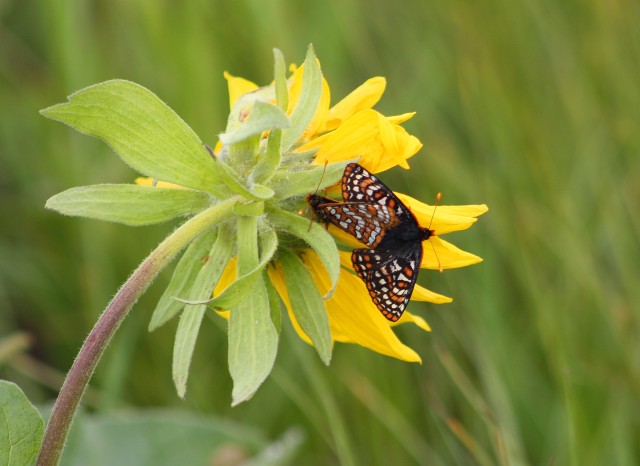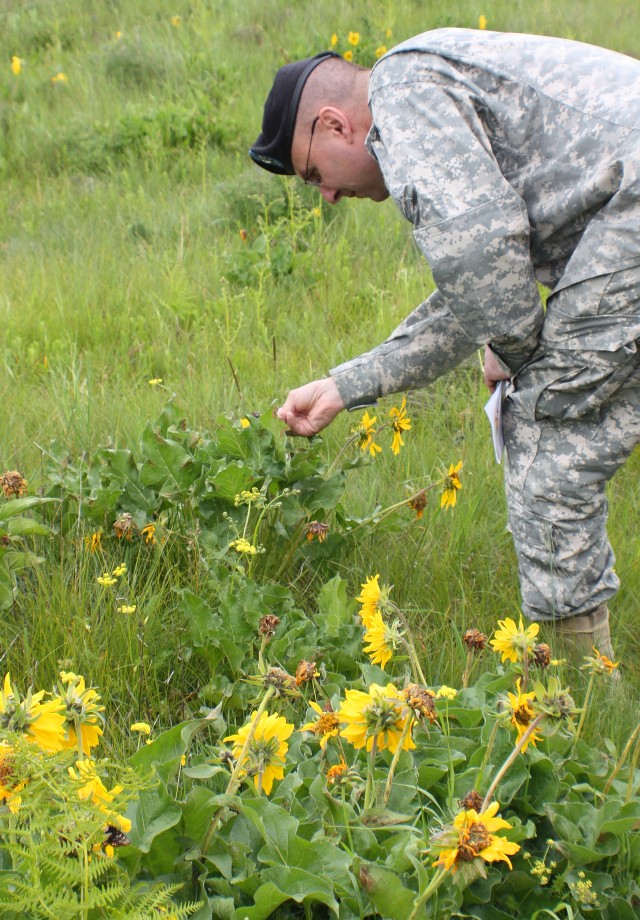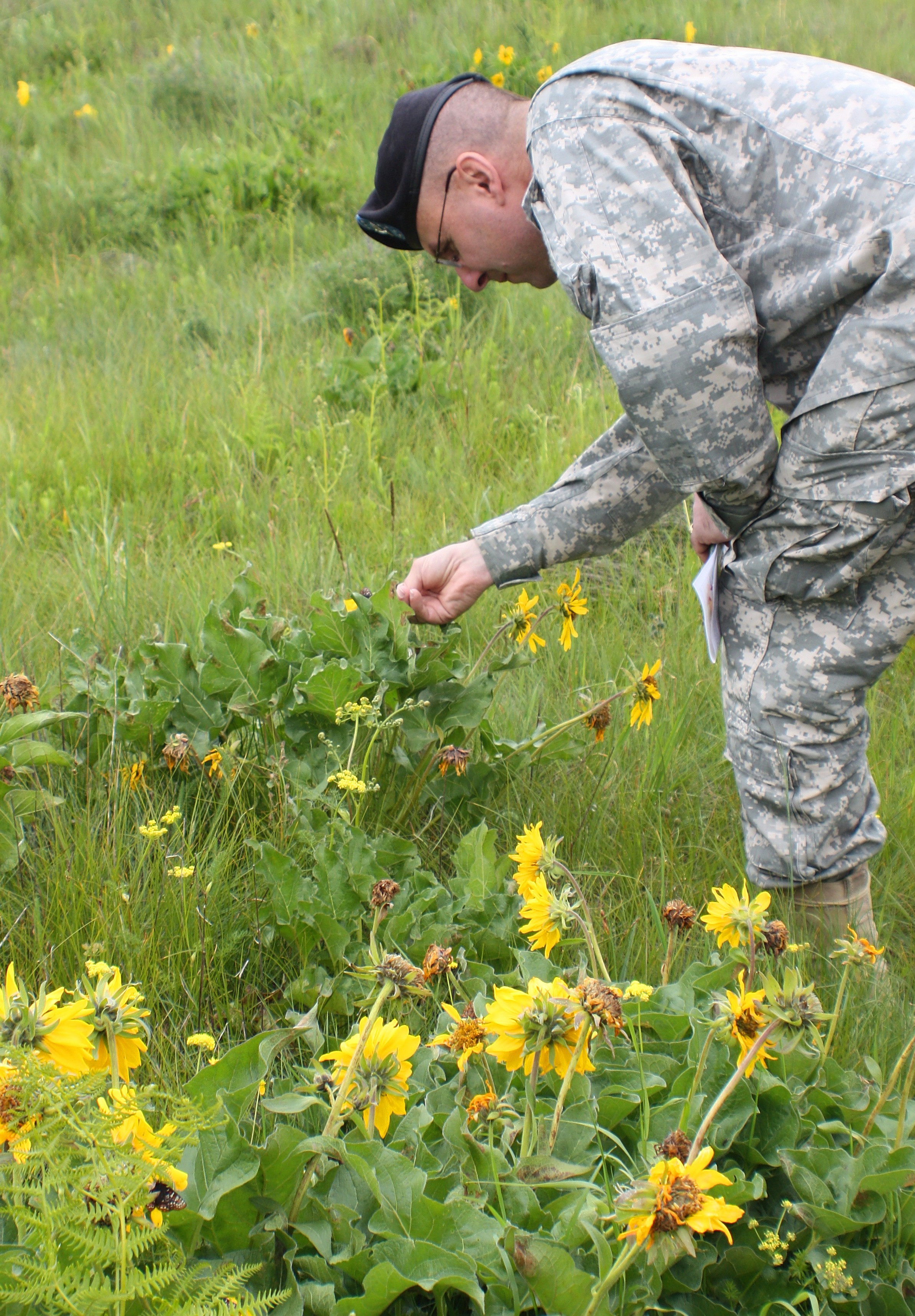JOINT BASE LEWIS-McCHORD, Wash. - Joint Base Lewis-McChord Garrison Commander Colonel Thomas Brittain - former Ranger and combat veteran - might have looked out of place as he carefully carried a dainty butterfly into a field of sunflowers. However, it was all part of JBLM's Army Compatible Use Buffer Program and a vital link to preserving a dwindling species as well as valuable training area.
Brittain said the Army's missions hinge on mitigating any potential environmental damage that might be caused when operating wheeled and tracked vehicles in fields and natural areas.
"It enables me to help repopulate some of the species that are in decline and in doing that, I gain flexibility in my training areas," Brittain said.
If populations of critical species are encouraged in areas around JBLM, it allows less hindered use of habitat on the installation.
While recently touring Scatter Creek Wildlife Area, Brittain took part in the release of endangered Taylor's checkerspot butterflies into the protected site. The nearly 400 acres of restored prairie land is now home to a small colony of Taylor's checkerspot butterflies.
Scatter Creek is one of several sites that are carefully managed and preserved to protect endangered or threatened species.
Other local species that are candidates for listing under the Endangered Species Act include the Mardon skipper butterfly, streaked horn lark and Mazama pocket gopher.
Working with Washington Department of Fish and Wildlife, Nature Conservancy, Wolf Haven International and Department of Natural Resources, JBLM ACUB takes a proactive approach to protecting the endangered species that require pristine prairie land to survive, Brittain said.
"If we didn't pay attention to the environmental concerns," Brittain said. "It would mean losing flexibility and capability to properly train our Soldiers."
Pairing with the Nature Conservancy to manage ACUB land has been a gratifying and positive experience for JBLM, he said.
"It's a great partnership," Brittain said. "It's something that we're going to continue to improve so that we can enhance the environment and protect our training lands."
WDFW wildlife program specialist Mary Linders said ACUB is a strong and well-working program for wildlife conservation.
"It's absolutely crucial," Linders said. "Really, it takes all of those groups working together to make it happen."
Joint Base Lewis-McChord is the source for many of the remaining threatened animal populations and has some of the highest quality habitats, she said.
"All of these sites are needed to create enough habitat to allow the species to persist," Linders said. "They can't persist on just a small patch here and there."
Brittain said he hopes to continue the success of the program.
Now, the biggest threat to ACUB and the species protected by it is strictly financial, he said.
"Securing the funding is critical to continuation of this program," Brittain said.
Rick Wood is a reporter with Joint Base Lewis-McChord's weekly newspaper, the Northwest Guardian.




Social Sharing